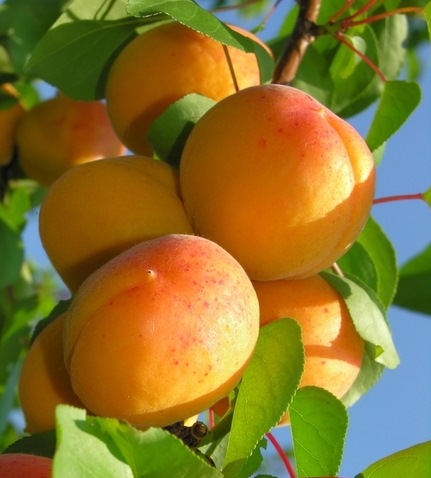From the report “Effects of regulated deficit irrigation on physiology, yield and fruit quality in apricot trees under Mediterranean conditions“, of Francisco Pérez-Sarmiento, Jose M. Mirás-Avalos, Rosalía Alcobendas, Juan J. Alarcón, Oussama Mounzer, and Emilio Nicolás, published at Spanish Journal of Agricultural Research.

Scarce water resources mainly in arid and semi-arid areas have caused an increasing interest for applying irrigation protocols aiming to reduce water spends. Mediterranean regions are characterized by the shortage of water resources. The regulated deficit irrigation (RDI) consists of applying water in quantities below those necessary to fully satisfy crop evapotranspiration (ETc) requirements during certain periods of the crop cycle when yield and crop quality are hardly affected, applying all the water needed during the rest of the cycle, especially at critical periods when the yield and/or quality would be greatly affected by a lack of water. In this sense, RDI has been successfully used, maintaining yield and fruit quality, in many fruit species, including citrus and olives.
The effects of regulated deficit irrigation (RDI) on the performance of apricot trees (Prunus armeniaca L. cv. “Búlida”) were assessed in Murcia (SE Spain), during three consecutive growing seasons (2008-2010). The hypothesis was that RDI would not restrict yield but increase fruit quality while saving water.
Irrigation treatments were established:
a) control, irrigated to fully satisfy crop water requirements (100% ETc and ii) RDI, that reduced the amount of applied water to: a) 40% of ETc at flowering and stage I of fruit growth.
b) 60% of ETc during the stage II of fruit growth.
c) 50% and 25% of ETc during the late postharvest period (from 60 days after harvest).
Stem water potential, gas exchanges, trunk cross-sectional area (TCSA), fruit diameter, yield and fruit quality traits were determined.
Vegetative growth was decreased by the use of RDI (12% less TCSA on average for the three years), whereas yield was unaffected. In addition, some qualitative characteristics of the fruits, such as the level of soluble solids, sweetness/acidity relation and fruit colour, were improved by the use of RDI.
These results and average water savings of approximately 30%, lead us to conclude that RDI strategies are a possible solution for irrigation management in areas with water shortages, such as arid and semi-arid environments.
In summary, results indicated that apricot is an appropriate species to apply RDI because of its clear separation between vegetative and reproductive growths and its ability to recover the fruit diameter reduction suffered during RDI application. In fact, vegetative growth was decreased by RDI, whereas yield remained unaffected. Furthermore, some fruit qualitative attributes such as the level of soluble solids, sweetness/acidity ratio and colour were enhanced by the use of RDI. These reasons, together with average water savings of about 30%, emphasize the RDI strategies as a possible solution for water shortage.

